|
One of your dog’s favorite activities to do with you is also why I see a lot of dogs in my clinic. I’m talking about fetch and it’s not all it’s cracked up to be! Playing fetch with your dog can place a lot of stain on their body and is also a leading cause of many of the injuries I see walk or, more accurately, limp through my doors. In this week’s blog I take a look at the game of fetch and explain why it’s something you should think twice about before doing it with your dog. The Demands of a Game of FetchOften when playing fetch, owners will go and go and go. I've noticed that many owners feel this strong NEED to continuously throw a ball for their dog, have them retrieve it, and repeat until the dog almost drops from exhaustion. The truth is the more fatigued our dog becomes, the less control they have over body movement. The way our dogs react to a game of fetch may be drastically different – some dogs will self-regulate well while others may continue to retrieve until they reach the point of exhaustion. Remember, fetch is not always going to be appropriate for all dogs so it’s important to know your dog! Playing fetch requires A LOT of mental and physical work!
Common Injuries from Fetch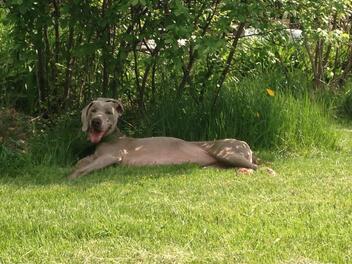 (Photo by Heather Grant) (Photo by Heather Grant) A simple game of fetch can lead to an injury that sidelines our dogs from their normal activities. There are a number of injuries that can occur ranging from minor to severe.
 Boomer, post-op (Liz Twaddle) Boomer, post-op (Liz Twaddle)
Preparing your Dog for the Demands of FetchIf you absolutely have to play fetch with your dog there are several ways to make it safer for your dog and that you can do NOW to help prepare them for the physical demands of fetch.
Alternative Games to Fetch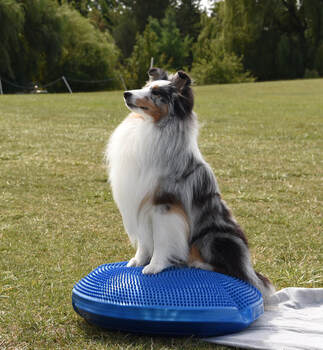 Fifty Fifty If playing fetch with your dog is your primary way of tiring them out it may be time to reconsider! There are more effective and safer ways to physically and mentally tire your dog. While fetch is a common game for dogs and owners to play it’s not the only game out there! It may come as a surprise but mental games can be just as fatiguing as physical ones! Some fun games to play with your dog are..
Bad Throws VS. Good ThrowsChances are, you’re not a pro softball player and your ball throwing is not always going to be perfect. In a game of fetch there is such a thing as a bad throw and a good throw. Have you ever thrown a ball and boinked your dog on the head? That's a bad throw! A bad throw may cause the ball to bounce erratically, have your dog run into other objects, or even hits your dog! If you’re using a ball launcher like a ChuckIt your ball may land a significant distance away making your dog run far to retrieve the ball and return. This is a lot of work! Did you know a ball thrown from a ChuckIt can reach 140 feet!? If I asked you to sprint 140 feet without a warm up and then to sprint back to me, you’re not only going to be tired but there’s a good chance you may hurt yourself! A good throw in a game of fetch is when I've thrown the ball only a short distance, low to the ground, and at an easy speed. This ensures my dog is building up to the physical demands of fetch progressively. A few slow, low to the ground, throws can gradually become a couple longer distance throws. A great alternative to playing fetch is to have them catch a ball in front of you! However, even this game must be done carefully by throwing the ball appropriately. In the pictures below can you tell which is a bad throw and which is a good throw? If you guess the left photo was a bad throw then you guessed correctly! We want to avoid throwing a ball high into the air or having it bounce erratically before the dog catches it. If the dog leaps from the ground to catch a ball there is an increased chance of an awkward landing. A bad throw can result in injury and lead to excessive force in the hips, knees, and back feet. Biomechanically, your dog shouldn’t jump straight up and straight down – this is the best way to cause a blown their CCL! Our dog’s body isn’t designed to withstand the force of this type of jump. In the photo on the right you can see a proper catching form with the back legs remaining on the ground and the dog jumping forward to catch the toy. When playing fetch we want to keep the throw as controlled as possible to ensure the dog retrieves it in a safe fashion. Chances are, this isn’t the type of fetch you’re playing with you dog but are rather playing a game of retrieve where you throw the ball and you dog runs to retrieve. When playing retrieve, you want to throw the ball low to the ground and avoid having the ball bounce erratically. You also want to limit the amount of hard running you dog will do when retrieving. Remember, playing fetch is hard work and it can be easy for us to fall into a repetitive loop that can push our dogs to exhaustion. A final thought....Remember, fetch doesn’t have to be the only game you play! There are much safer options out there and I encourage you to give them a try. Whenever our dogs are playing or being active, we want to make sure they’re doing so in a safe manner. As a canine physio, my preferred way to treat injuries is to avoid them in the first place! Fetch, as a game, has a lot of inherent risks and I would caution owners to limit or avoid playing fetch with their dog. SourcesBockstahler, B., Tichy, A. & Aigner, P. Compensatory load redistribution in Labrador retrievers when carrying different weights – a non-randomized prospective trial. BMC Vet Res 12, 92 (2016). https://doi.org/10.1186/s12917-016-0715-7
Gams, Jana. “Repetitive ball throwing: the facts and the alternatives.” Dogs4Motion (2020), https://www.dogs4motion.com/en/blog/535-repetitive-ball-throwing Gross Torraca, Debbie. “TBT - Think Before Throwing,” TotoFit (2017) http://totofit.com/tbt-think-before-throwing
6 Comments
Gail Coady
2/19/2021 10:42:51 am
I play fetch with my 3 year old beagle Chet on the grass. He has had surgery for IVDD, he still has a deficit in his hind end. I only play for 10 min and there’s a small knoll and I toss the ball up the knoll to help him with his hind end, especially on the downhill. Most of his conditioning is done at home with cone wrapping, sit to stand, figure 8’s. He will always have a deficit but small steps to help him build strength and be happy is the goal!
Reply
Carolyn
2/20/2021 06:08:57 pm
Hi Gail!
Reply
Collene Gaolach
2/19/2021 12:37:14 pm
In light of your statement "Biomechanically, your dog shouldn’t jump straight up and straight down – this is the best way to cause a blown their CCL! Our dog’s body isn’t designed to withstand the force of this type of jump.", please compare and contrast the type of jumping you are showing in the two throw pictures at the end with agility jumping.
Reply
Carolyn
2/20/2021 03:01:02 pm
You're right Collene it's not quite the same! The issue with having your dog jump up and then come back down on their hind ends is that their hind end isn't built to take the force. This is exactly how Boomer, the dog I mention, broke his leg. He jumped up to grab a ball and landed wrong on the hind end - breaking the femur.
Reply
Christy
7/31/2023 05:27:11 pm
Unfortunately our aussiedoodle Jagger thinks he is a high flying circus dog! No matter if we want him to or not, he loves to run full out & jump higher than necessary for balls and toys. He also loves to put a little spin in his jump at times. Does it scare me - yes. Will he stop - no!
Reply
Leave a Reply. |
AuthorCarolyn McIntyre Archives
March 2024
Categories
All
|

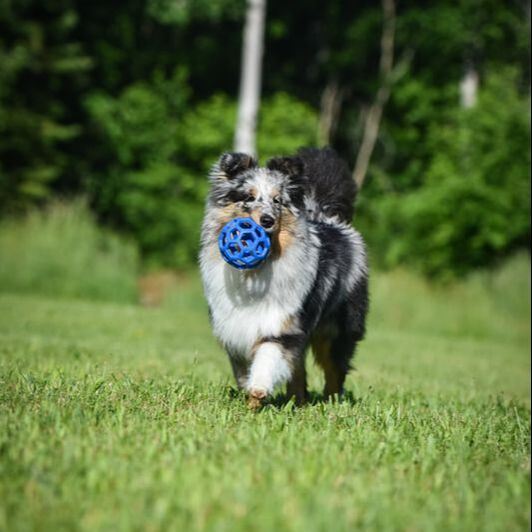
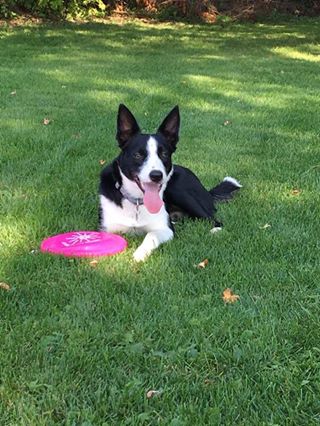
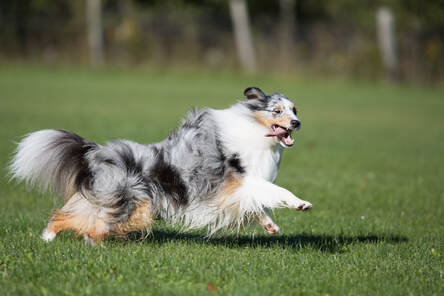
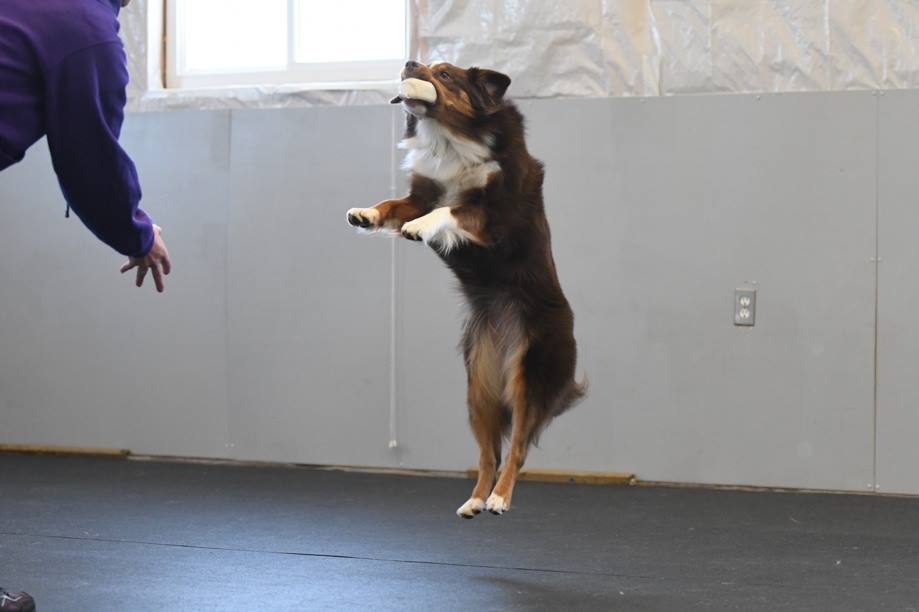
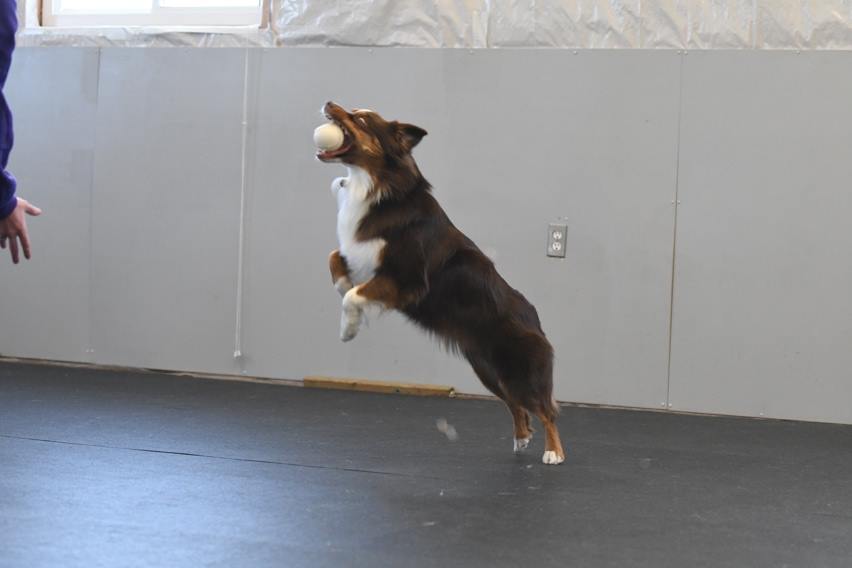
 RSS Feed
RSS Feed